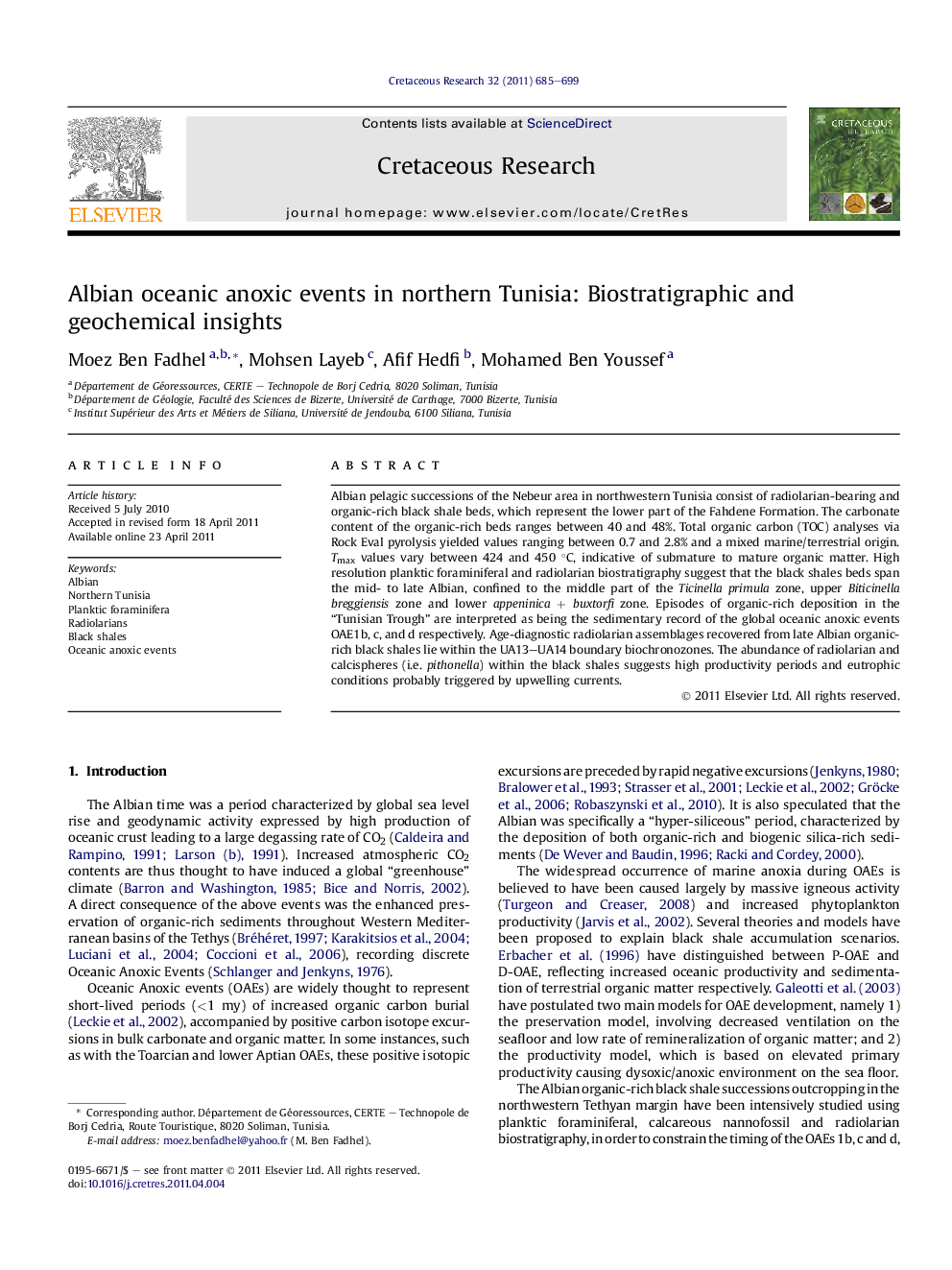| Article ID | Journal | Published Year | Pages | File Type |
|---|---|---|---|---|
| 4747410 | Cretaceous Research | 2011 | 15 Pages |
Albian pelagic successions of the Nebeur area in northwestern Tunisia consist of radiolarian-bearing and organic-rich black shale beds, which represent the lower part of the Fahdene Formation. The carbonate content of the organic-rich beds ranges between 40 and 48%. Total organic carbon (TOC) analyses via Rock Eval pyrolysis yielded values ranging between 0.7 and 2.8% and a mixed marine/terrestrial origin. Tmax values vary between 424 and 450 °C, indicative of submature to mature organic matter. High resolution planktic foraminiferal and radiolarian biostratigraphy suggest that the black shales beds span the mid- to late Albian, confined to the middle part of the Ticinella primula zone, upper Biticinella breggiensis zone and lower appeninica + buxtorfi zone. Episodes of organic-rich deposition in the “Tunisian Trough” are interpreted as being the sedimentary record of the global oceanic anoxic events OAE1b, c, and d respectively. Age-diagnostic radiolarian assemblages recovered from late Albian organic-rich black shales lie within the UA13–UA14 boundary biochronozones. The abundance of radiolarian and calcispheres (i.e. pithonella) within the black shales suggests high productivity periods and eutrophic conditions probably triggered by upwelling currents.
► Planktic foraminifera and radiolarian age constrain of Albian black shales in Tunisia. ► TOC and Rock Eval pyrolysis show mixed terrestrial/marine origin and mature OM. ► Correlation of black shales beds indicates large-scale events in relationships with OAEs. ► Radiolarian-rich beds reflect carbonate dissolution associated with the lysocline rise. ► Orbital forcings are involved in marine high productivity and upwelling events.
